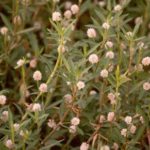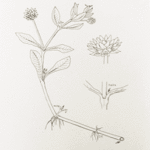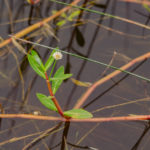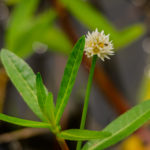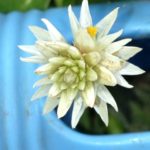Alternanthera philoxeroides
Non-Native
USDA, NRCS. 2018. The PLANTS Database (http://plants.usda.gov, 28 March 2018). National Plant Data Team, Greensboro, NC 27401-4901 USA.
Illustration courtesy of University of Florida/IFAS Center for Aquatic and Invasive Plants. Used with permission.
What is Alligator Weed?
Physical Characteristics
Leaves:
- Opposite
- Thick and fleshy
- Smooth
- Linear to sword-shaped or Oval-shaped and thinner at base
- 0.78-4.33 inches long
- 0.2-0.78 inches wide
- Thin & immobile at base
Flowers:
- Immobile in the bractlets
- Sweet scented
- Smooth
- 0.2-0.23 inches long
- Silvery-white
- Filaments linear/slender
- Simple
- Nearly disk-shaped or cylindrical
- 0.78-2.75 inches long on peduncles
Stem:
- Simple or branching
- 1-3.25 inches long
- Smooth branches
- Laying along ground, curving upward
- At or just below the surface of the ground
- Forming mats
- Thick
Roots:
- Rooting at nodes
Where Does it Grow?
EDDMapS. 2024. Early Detection & Distribution Mapping System. The University of Georgia – Center for Invasive Species and Ecosystem Health. Available online at http://www.eddmaps.org/; last accessed January 17, 2024.
Alligator weed is non-native to North America and should not be spread. It is an obligate wetland plant that can be found in waste places in ponds, streams, and along some rivers.
Pros and Cons of Alligator Weed
This is a non-native plant that should not be grown as it is invasive and illegal to possess or transport this species in Texas. Please report sightings to the Texas Parks and Wildlife Department at (512) 389-4800.
